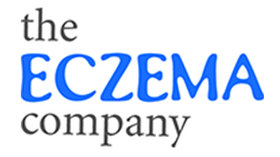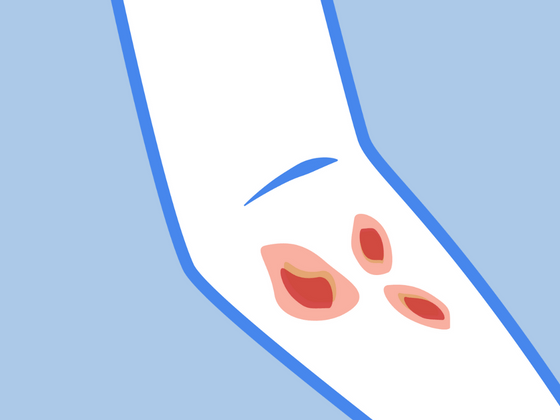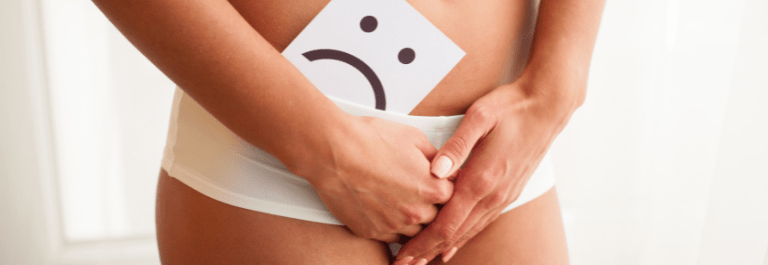At some point in your life, you may have wondered “can you get yeast infections on your skin?” To put in plainly: yes, you absolutely can. Yeast skin infections tend to occur in skin-to-skin areas such as the skinfolds under the breasts, belly, groin, or neck and the underarms. These areas are warm and moist, making it easier for yeast to grow. In this post, we’ll explore eczema and yeast infections and share some natural treatment methods.
Please keep in mind that although what we discuss in this post can relieve eczema, we are in no way medical professionals. If you’re experiencing severe eczema symptoms like an infection, it is best to seek medical advice immediately.
Eczema and Yeast Infection
Eczema is an umbrella term to describe a group of inflammatory skin conditions. It’s caused by a damaged skin that has trouble retaining moisture. As a result, eczema is very dry and very itchy. A yeast infection is typically caused by a fungus called Candida albicans. It may surprise you to hear that this kind of yeast naturally lives on your skin. However, when too much yeast grows, the result is a skin yeast infection.
Symptoms of Eczema and Yeast Infection
Eczema and yeast infections share similar symptoms. They are both characterized by red and scaly patches on the skin. However, while one of the primary features of eczema is dry skin, yeast infections tend to be more moist. In addition, both conditions can involve an itching or burning sensation. The affected skin will also likely be irritated easily and tender to the touch. If scratching persists, the skin may crack or bleed which can pave the way for infection.
Does Candida cause Eczema?
Candida and eczema can sometimes occur simultaneously but one does not cause the other. However, having one condition can increase the likelihood of the other developing. A yeast infection is caused by a variety of different factors, including wearing tight-fitting clothing that locks moisture onto the skin. It can also result because of health problems and a weakened immune system.
During the warmer months of the year, the risk of developing a yeast infection increases as the skin becomes warmer and more moist. Candida overgrowth is also related to overall gut’s health which can also affect one’s eczema. So it’s safe to say that a yeast infection can worsen eczema symptoms or prevent open eczema wounds from healing.
How to Protect your Skin
Fortunately, there are some lifestyle changes and natural remedies you can try to protect your skin from developing candida and to manage eczema symptoms. Here are some of our favourites:
Protect the Skin from Sweat
Sweat can instigate the growth of candida and it can also trigger an eczema flare up. That’s why it’s in your best interest to avoid wearing non breathable clothing that can cause the skin to become too moist. Our Remedywear clothing features moisture-wicking sweat control so that there’s no need to worry about sweaty irritation or chafing. Here are some cooling garments we recommend for eczema in the groin area, inlcluding vaginal or scrotal eczema:
Remedywear™ (TENCEL + Zinc) Long Sleeve Shirt - Adults
Remedywear™ (TENCEL + Zinc) Pants - ADULT Unisex
Remedywear™ (TENCEL + Zinc) Long Pants for KIDS
Remedywear™ (TENCEL + Zinc) Long Sleeve Shirt for KIDS
Remedywear™ (TENCEL + Zinc) MEN'S Boxer Briefs
Apply an Anti-fungal cream
Our Organic Manuka Skin Soothing Cream is a non greasy balm that’s rich in emollients. Because it’s made with the powerful manuka honey, it has a lot of antibacterial power! To illustrate, Manuka oil is 20 to 30 times more effective against bacteria and 5 to 10 times more effective against fungus than tea tree oil. It’s a great choice for soothing sensitive skin and warding off potential infections.
Wash with a Gentle Soap
This Tallow Soap Bar with Zinc was made to calm skin conditions, soothe rashes, and reduce inflammation. Thanks to its antifungal and antibacterial properties, it does a great job healing wounds too. Tallow also helps prevent infection and keeps the skin from drying out. Gentle and hypoallergenic, it’s great to use from head to toe.It can even be lathered on to treat seborrheic dermatitis. After you’re done washing, be sure to pat dry your skin with a towel.
References:
https://www.medicalnewstoday.com/articles/238227#1
https://www.emedicinehealth.com/fungal_skin_infection_vs_eczema/symptom.htm
https://www.healthline.com/health/skin/cutaneous-candidiasis
https://www.uofmhealth.org/health-library/abr7621
------------------

Bio: Laura is a contributor and content developer for The Eczema Company. She is in no way a medical professional. Her comments, suggestions, and reflections are not intended to replace any medical advice. Always seek the help of a medical professional before undertaking any diet or lifestyle changes.








